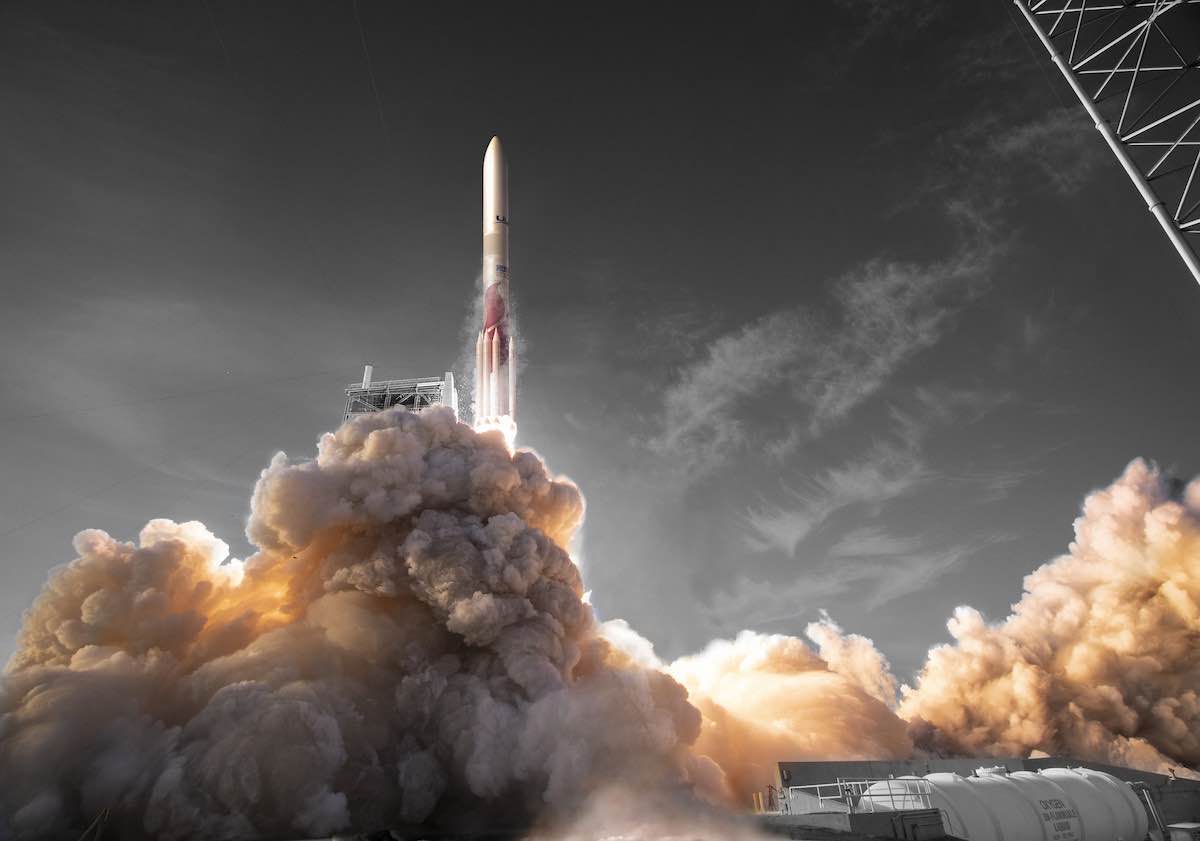
The U.S. Space Force recently ordered five military satellite launches from United Launch Alliance and three from SpaceX, awards valued at $846 million for missions scheduled to fly in the next two years.
The task orders maintain the split between ULA and SpaceX for the U.S. military’s National Security Space Launch, or NSSL, missions outlined in the Pentagon’s Phase 2 launch service contracts awarded in 2020. ULA won 60% of the NSSL missions set to launch in a five-year period through 2027, and SpaceX won 40%.
ULA and SpaceX won the Phase 2 launch services procurement over bids from Blue Origin and Northrop Grumman, giving the two companies rights to the launch the military’s most critical and costly national security satellites.
ULA’s next-generation Vulcan Centaur rocket and SpaceX’s Falcon 9 rocket will launch the eight missions over the next two years, according to the Space Force’s Space Systems Command.
The Phase 2 launch service contracts are the culmination of the Pentagon’s effort to reintroduce competition into the military’s launch procurements. ULA, a 50-50 joint venture between Boeing and Lockheed Martin, was the military’s sole launch provider for large national security satellites for more than a decade until the Air Force certified SpaceX.
The Space Force, which took over the military’s launch service procurements from the Air Force, awards launch task orders on an annual basis under the auspices of the Phase 2 contracts with ULA and SpaceX.
The 2022 awards announced last month included five launches for ULA, with a combined value of $566 million. The task orders for SpaceX’s three Falcon 9 missions are worth $280 million.
The five ULA missions are:
• A Vulcan Centaur launch from Cape Canaveral to deploy the GPS 3-7 navigation satellite into a medium Earth transfer orbit
• Three Vulcan Centaur launches from Cape Canaveral (codenamed USSF-16, USSF-23, and USSF-43) carrying classified payloads
• A Vulcan Centaur launch from Cape Canaveral to deploy the Wideband Global SATCOM 11 communications satellite into a geosynchronous transfer orbit
The three SpaceX missions are:
• A Falcon 9 launch from Cape Canaveral on the USSF-124 mission, carrying a payload into low Earth orbit for the Missile Defense Agency
• A Falcon 9 launch from Vandenberg Space Force Base on the USSF-62 mission, carrying the first Weather System Follow-on satellite into polar orbit
• A Falcon 9 launch from Vandenberg Space Force Base on the first mission carrying satellites for the Space Development Agency’s Tranche 1 Transport Layer into polar orbit

While SpaceX’s Falcon 9 rocket has launched 157 times, ULA’s Vulcan Centaur is at least six months from its first test flight. ULA is developing the Vulcan Centaur rocket to replace the Atlas and Delta launcher families, which are slated for retirement.
“We work closely with our launch service providers and mission partners to ensure launch capability exists to get our critical payloads to orbit on-time and without failure,” said Col. Chad Melone, chief of the launch procurement and integration division at Space Systems Command. “ULA and SpaceX have highly capable launch systems and we have full confidence that they will meet our needs for the eight missions we ordered today.”
“Now, more than ever, we must do everything in our power to ensure each national security space launch is successful,” said Brig. Gen. Stephen Purdy, SSC’s program executive officer for assured access to space, in a statement. “It’s the best way to stay ahead of our adversaries in the near term. We launch the nation’s ‘eyes and ears,’ secure communications, GPS, and space awareness that provide our warfighters and national decision-makers with the vital information they need to protect our nation and allies.”
Email the author.
Follow Stephen Clark on Twitter: @StephenClark1.
from Spaceflight Now https://ift.tt/Qo2PHeT
via World Space Info







0 comments:
Post a Comment